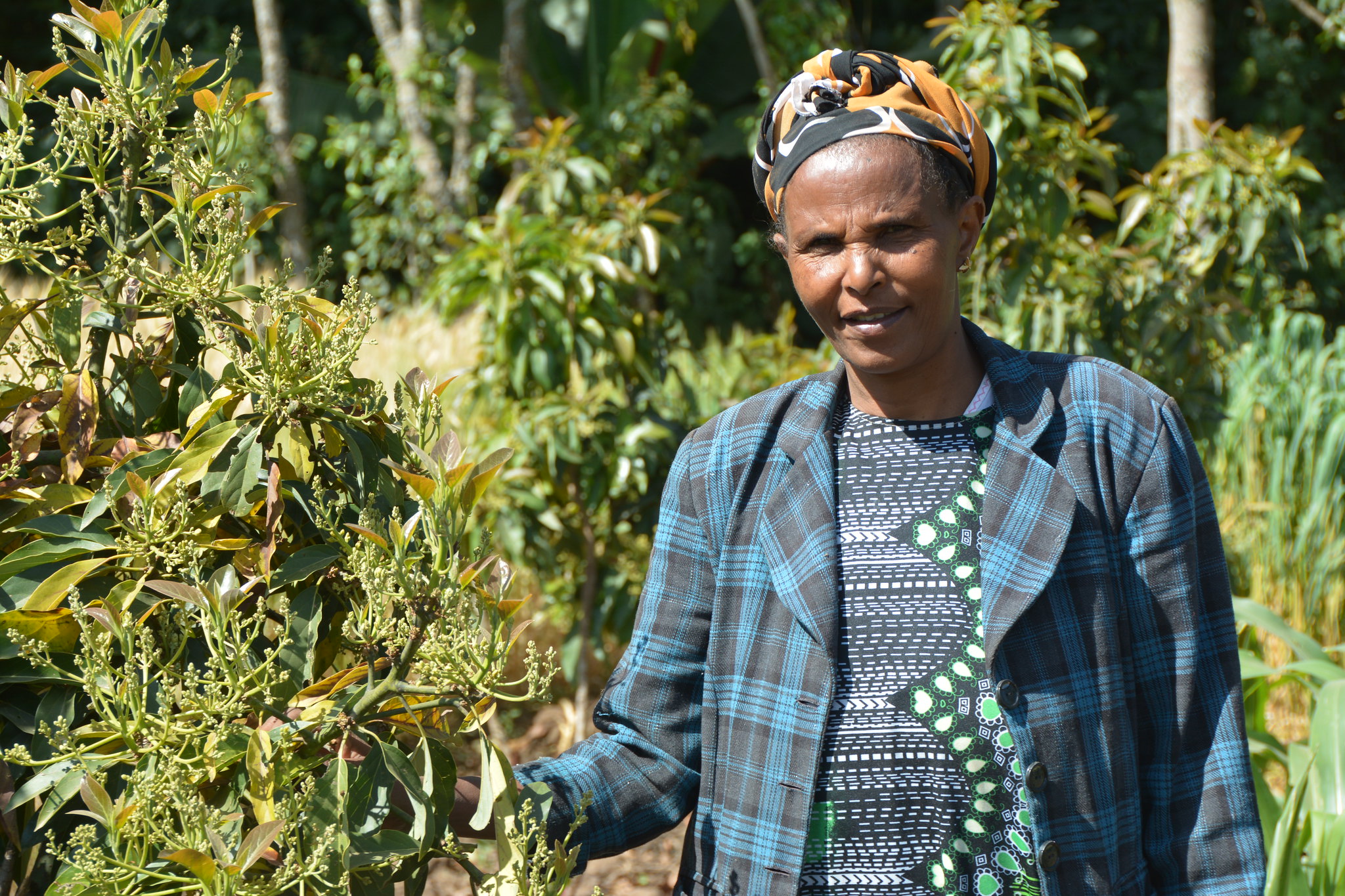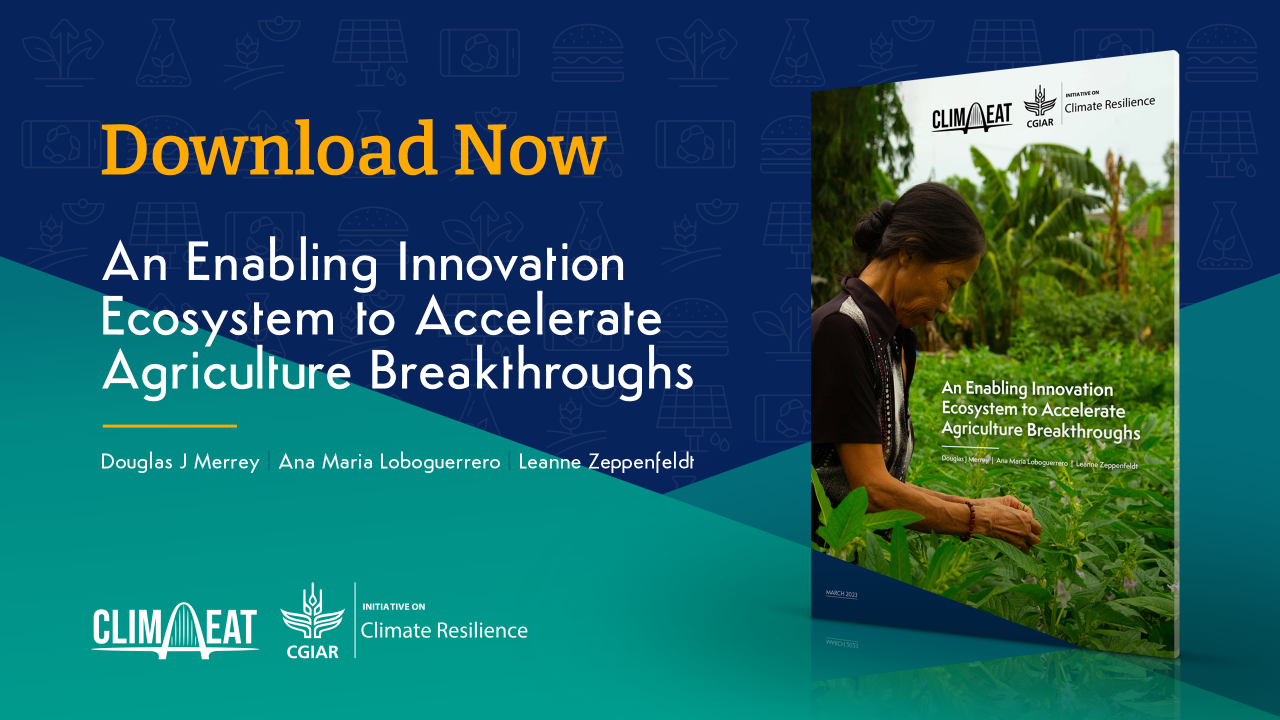Enabling innovation for breakthroughs in agriculture: Key recommendations as the AIM for Climate Summit kicks off
-
From
CGIAR Initiative on Climate Resilience
-
Published on
08.05.23
- Impact Area

By Doug Merrey, Ana Maria Loboguerrero, and Leanne Zeppenfeldt
At the Agriculture Innovation Mission for Climate (AIM4C) Summit that kicks off today, agricultural and food, land, and water systems innovation will be a hot topic in the coming days, and throughout 2023 – and rightly so.
Innovations will have a critical role to play in the urgent transformation of our agricultural systems to be productive, healthy, sustainable, and inclusive, and to contribute to lowering greenhouse gas (GHG) emissions.
However, our current innovation ecosystems are not effective enough in identifying and promoting game-changing innovations. They are highly intertwined with the current food system. To break this path dependence, we can’t just focus on what we’re innovating, but rather need to shift gears to how we’re innovating.
A recent report by Clim-Eat and the CGIAR Climate Resilience initiative proposes a set of recommendations for ensuring an enabling innovation ecosystem that will help realize the multiple breakthroughs in diverse agricultural systems needed to reach the Agriculture Breakthrough Goal of making climate-resilient, sustainable agriculture the most attractive and widely adopted option for farmers everywhere by 2030. So, what are the recommendations?
1. Integrate current partnership initiatives
There is a lot of energy around agricultural innovation, especially as it’s set to be a key theme for COP28 in the United Arab Emirates (UAE), later this year. There is also so much happening in parallel; we need to do a better job at aligning initiatives and ensuring hyper-collaboration. The report proposes the development of a coalition for Agricultural Systems Transformation. This coalition could take the shape of a formalized initiative but fundamentally points to the need for a strong shared mission orientation, effective leadership, and a willingness to take risks and learn from failure throughout the innovation ecosystem.
2. Foster an enabling environment for innovative financing
Stable, long-term finance is essential to foster game-changing innovations. Shifts in existing funds, subsidy schemes, incentives for start-ups, and local agricultural credit systems to promote uptake of innovations are key levers of change. Achieving these reforms, however, will only be possible through strong political commitment, something that can be built at the AIM4C Summit this week.
3. Radical, evidence-based policy and governance reform
A common, but essential, recommendation in the report is the need to challenge how policies reflect and support the distribution of power in the current agricultural system. Again, this requires considerable commitment, but it can be achieved.
4. Monitor, evaluate, and learn
Effective and relevant monitoring, evaluation, and learning (MEL) systems in our innovation ecosystems will also be critical in monitoring the progress of various potential game-changing innovations, as well as sector-wide progress. The work by FAO to provide a global roadmap for agriculture to 2050 that will mitigate risks and set standards for the industry might prove to be a good starting point.
The report recommendations are based on five case studies of potentially game-changing innovations. The case analysis explores the conditions conducive to an agricultural innovation becoming a real “game-changer,” and the bottlenecks that result from the innovation ecosystem. The five case studies present different types of interventions and disciplines and cover different impediments to truly changing the “agriculture game.”
The case studies, based on priority areas under the Agriculture Breakthrough, include 1) Integrated Soil Fertility Management (ISFM), 2) the Drought Tolerant Maize for Africa (DTMA) initiative, 3) agroecological approaches and water management through the use of solar-powered pump irrigation, 4) Bundled Digital Climate-Informed Advisory Services (DCAS), index insurance, and input provision, and 5) alternatives to meat proteins, as part of non-traditional production.
Utilizing the lens of the case studies and recommendations, the report highlights that while individual innovations can be game-changing, the success of these innovations to truly contribute to a breakthrough in the agriculture sector relies on visionary, effective leadership, an enabling innovation ecosystem, and capitalizing on the potential of bundling a variety of interventions.
As policymakers, researchers, NGOs, private enterprises, and other stakeholders gather this week, the AIM for Climate Summit will be an ideal opportunity to showcase the leadership and collaboration required for truly game-changing agricultural innovation.
This post was first published at the Clim-Eat website.
Related news
-

Mapping for Resilience: How Spatial Data is Transforming Karamoja Cluster
Ibukun Taiwo02.07.25-
Climate adaptation & mitigation
Pastoral communities in the Karamoja Cluster (a region spanning Kenya, Uganda, South Sudan, and Ethi…
Read more -
-

Building Resilience and Regeneration: The Central Highlands Ecoregion Foodscape (CHEF)
Sehlule Muzata02.07.25-
Climate adaptation & mitigation
At the CGIAR Sustainable Farming Program (SFP), we believe that collaboration is essential for trans…
Read more -
-

Planting with Precision: How Weather and Climate Information is Changing Bean Farming in Rwanda
The Alliance of Bioversity International and the International Center for Tropical Agriculture (CIAT)01.07.25-
Climate adaptation & mitigation
Imagine weather information as a GPS for farmers. Without it, the journey becomes uncertain, filled…
Read more -

